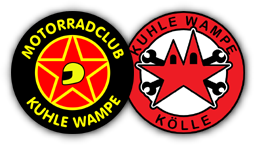Thailand Australia Free Trade Agreement
18. Dezember 2020
Prepared antifreeze products and de-icing liquids. gives investors much more rights to directly put the laws and policies of the other country in difficulty. These disputes are resolved by groups of commercial law experts, although the issues they raise often have implications for public policy issues. Disputes are not public, unlike a country`s national legal proceedings… AFTINET strongly opposed this process because there are inappropriate legal powers for companies to challenge state law and policy.148 Offers immediate free trade from the effective date for a number of valuable milk export tariff lines – particularly highly processed products such as dairy protein concentrates , casein, lactose and infant food. It also provides for advance payments for all other dairy products and for the final free trade of all dairy products.48 It is remarkable that the FDFA and Ministers documents do not discuss how this trade agreement will encourage or affect these development objectives. It is therefore difficult to know whether the objectives are more than mere rhetoric when it comes to trade negotiations with developing countries.180 FCAI believes that the proposed agreement between Australia and Thailand is ultimately in line with Australia`s overall trade policy objectives and ensures australian exporters reciprocal gains in market access76 by provisionally concluding the application of interim safeguards. that the increase in imports of an original product by the other parties as a result of the reduction or removal of a obligation arising from the agreement have caused or threaten to cause serious damage … The inclusion of this 200-day regime enhances the ability of this regime to address industry concerns about the implementation of safeguards29. For some elements, the agreement also provides that origin can be attributed when a minimum content in „regional value“ (RVC) is calculated on the basis of the „transaction“ value (or the „FOB“ value) adjusted for the final product using a construction method (i.e., the value of non-origin materials is deducted from the adjusted FOB value of the item). 105 We have consulted with state and territory governments throughout the negotiations, and none of the other state and territory governments have expressed such concerns… An important difference between the Singapore Free Trade Agreement and the Thai Free Trade Agreement is that, with regard to Singapore, many consultations with states and territories have focused on issues such as public procurement and services. In this case, a negative list approach was adopted and the potential impact on the flexibility of state and territory regulation was therefore quite significant.
In this case, these concerns simply do not arise. The content of the negotiations, if you will, has not been as relevant to the states and territories. All I can assume is that the reservations or concerns expressed by the ACT government reflect a misunderstanding of the differences between the two agreements and that they may not have yet studied the fine print in public procurement and TAFTA services.197 That is why we maintain that, in a free trade agreement, it is not possible for countries to create a preferred scientific path for the partners of the free trade agreement. This is simply impossible and contrary to the WTO agreement.133 Under this agreement, the maximum regional value for most automotive products is set at 40%. This is a requirement that all current Australian industrial vehicles would have very little difficulty in complying with this requirement.
